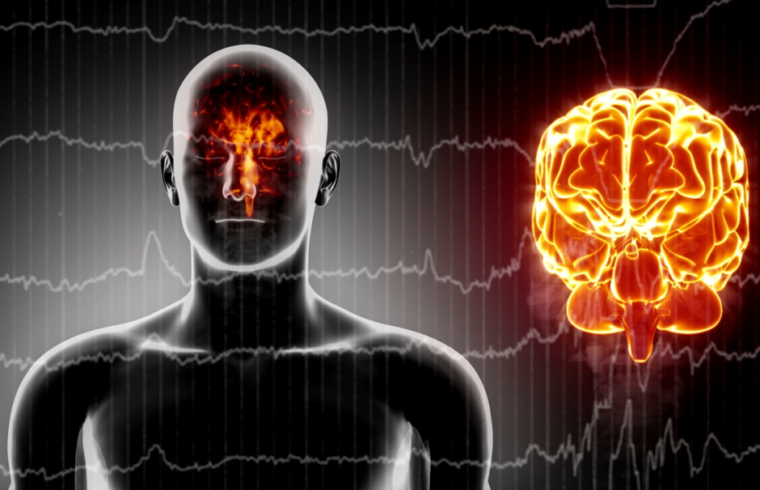How to measure in a scientific way a concept a priori as abstract as the dream? The truth is, you can’t.
Or in any case, almost not … The only scientific measurement that we will be able to make is that of the different sleep phases, including that of REM sleep, commonly associated with dreaming.
EEG, EMG and EOG to measure sleep phases
To do this, you need to perform an electroencephalogram (EEG), that is, a recording of the electrical activity of the brain, during the sleep period. Small electrodes are placed on the surface of the scalp.
These will capture the differences in electrical potential produced in the cortex, which will result in the drawing of a curve: this is the EEG.
It is this wave curve which makes it possible to identify the phases of sleep: distant waves during slow sleep, much closer during REM sleep, where the cortical electrical activity is as important as during awakening.
But the plot does not indicate whether the person dreamed or not during this phase of REM sleep. This examination is carried out by a neurologist, who will then analyze the course. It is relatively recent since it was born in the 1920s.
To complete the experiment, an electromyogram (EMG) is also performed. In the same way that we record the electrical activity of the brain, we measure that of the muscles.
As for the electro-oculogram (EOG), it makes it possible to observe the movements of the eyes: thus, one can locate the phase of REM sleep thanks to the very rapid movements of the eyes or REM (Rapid Eye Movement).
All of these three data (EEG, EMG and EOG), measured on the duration of sleep, will make it possible to build a hypnogram, that is to say a map of electrical activity during sleep.
Researchers cannot tell if you are dreaming of fire or spiders. But they can then clearly see the different phases of the cycle and the different successive cycles.
Researchers are able to go further in their analysis, especially in their experiments on animals. but not for humans.
They can, for example, inject radioactive substances before performing a magnetic resonance imaging (MRI) test: it is a way of observing which areas of the brain are activated or not during the different phases of sleep or awakening.
But here again, it cannot be said precisely whether the activation of these zones corresponds to a dream or simply to REM sleep.
Objective criteria of the dream
Another solution to spot REM sleep is to observe its physical signs. Researchers specializing in sleep and dreams have thus listed “objective criteria of the dream”.
Lack of muscle tone: difficult to observe when lying down but can be seen when a person begins to fall asleep in his chair, for example. The neck “breaks”, the head falls, the body is limp, slumped.
Conversely, eye movements are rapid. Heart rate and breathing become irregular. In men there is an erection, unrelated to the content of the dream and at all ages.
The only way to know if the guinea pig you are studying has had a dream is to wake it up and ask it! Theoretically, if the person is awake during the REM phase, they should remember their dream in detail or, at least, remember that they were dreaming.
Hence the track of the electroencephalogram, a precious aid for measuring the sleep phases.


